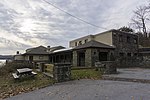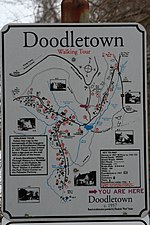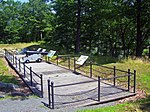Iona Island (New York)

Iona Island is a 556-acre (2.25 km2) island of the Hudson River in the town of Stony Point, New York, on its west bank. The island is located approximately one mile (1.6 km) south of the Bear Mountain Bridge and is separated from the Hudson's western shore by mudflats and freshwater tidal marshes. It is part of Bear Mountain State Park, although it is occasionally listed separately as Iona Island State Park. From 1899 to 1947 the island was used as the Naval Ammunition Depot Iona Island. The island and its adjacent marsh were designated a National Natural Landmark in May 1974, and it is part of the Hudson River National Estuarine Research Reserve. It serves mainly as a bird sanctuary, particularly known as a winter nesting place for bald eagles.
Excerpt from the Wikipedia article Iona Island (New York) (License: CC BY-SA 3.0, Authors, Images).Iona Island (New York)
Iona Island,
Geographical coordinates (GPS) Address Nearby Places Show on map
Geographical coordinates (GPS)
| Latitude | Longitude |
|---|---|
| N 41.303888888889 ° | E -73.977222222222 ° |
Address
Iona Island Estuarine Research Reserve
Iona Island
10922
New York, United States
Open on Google Maps








